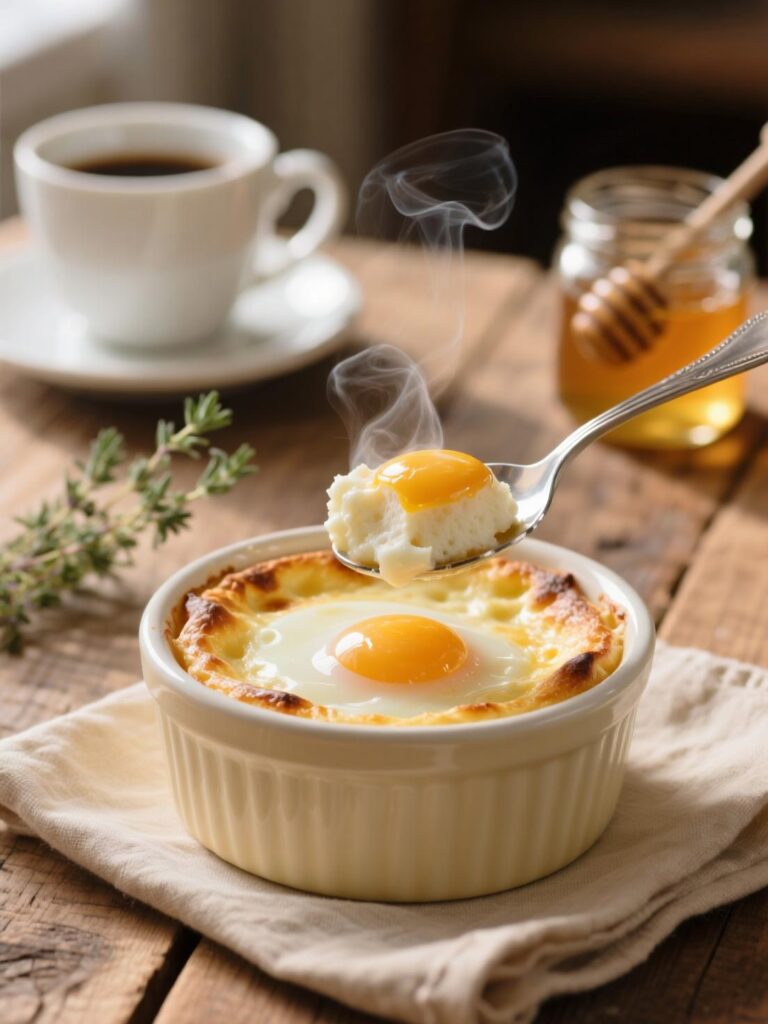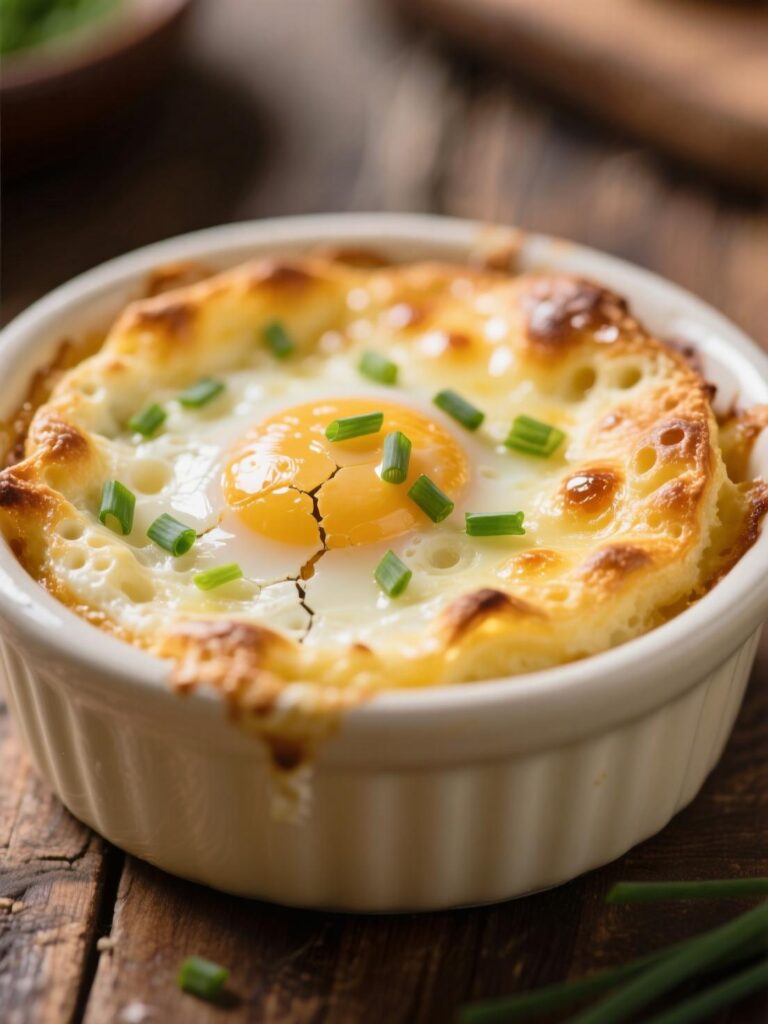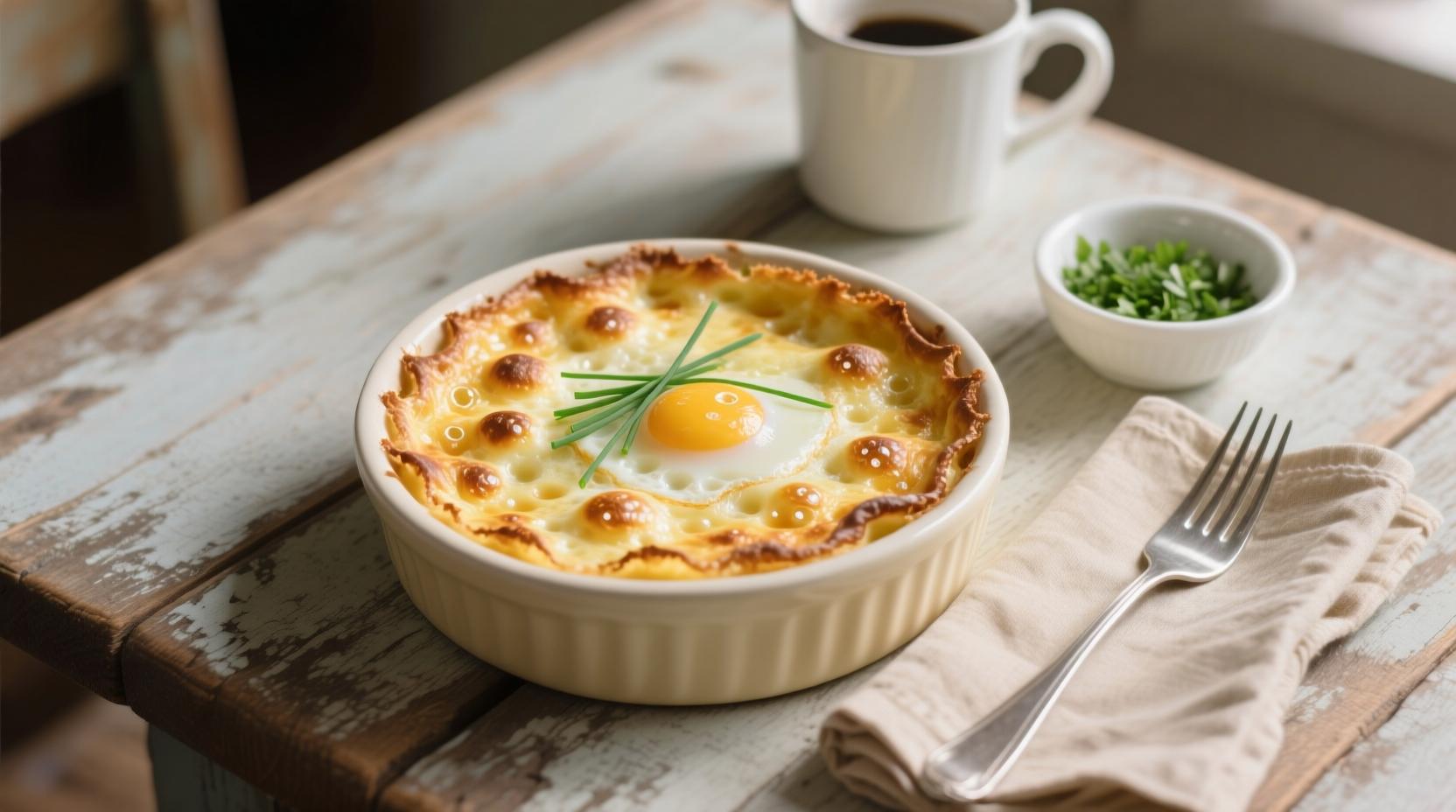There’s something quietly genius about baked cottage cheese eggs. The name sounds humble, almost plain. But pull that dish from the oven at just the right moment, and you’ve got a meal that walks a fine line between indulgent and virtuous. This isn’t your average breakfast scramble. It’s a chef’s trick—silky, set curds cradled in rich, airy eggs, baked until barely golden, holding enough protein to keep a marathoner on their feet. The real beauty? It’s a recipe that thrives in both a Michelin-level kitchen and a half-asleep Sunday home cook’s oven.
Why Cottage Cheese in Eggs Is Smarter Than You Think
Cottage cheese has always had a strange PR problem. Some folks think of it as diet food from the 80s, spooned onto sad lettuce leaves. Others avoid it because of its curds-and-whey texture. But in culinary terms, it’s a secret weapon.
High-quality cottage cheese, especially small-curd varieties, melts down beautifully in heat without breaking like some cream-based mixtures. Its high casein protein content slows down digestion, making the eggs more satisfying. And unlike heavy cream, which can weigh eggs down, cottage cheese actually lifts them, creating a lighter custard-like bake. Professional kitchens use this principle—swap heavy fat for cultured dairy—to give eggs a tender structure without greasiness.
A USDA nutrient analysis shows that one cup of low-fat cottage cheese packs about 28g of protein, 6g of carbs, and 2g of fat. Combine that with eggs’ natural lecithin and emulsifying properties, and you’ve got a protein-rich dish that holds moisture far better than an omelette cooked dry.
The Science of Texture in Baked Eggs
Cooking eggs isn’t just cooking eggs. It’s chemistry in real time. When you bake eggs, the proteins in the whites (ovalbumin) and yolks (livetin, phosvitin) slowly unwind and link together. Too much heat? They squeeze out water like wrung sponges. Too little? They remain loose and unset.
Cottage cheese throws another twist into the process. Its curds already contain partially denatured proteins from the cheesemaking process. When they mingle with raw eggs, they act as little texture cushions—absorbing and releasing moisture slowly during baking. This is why a properly made baked cottage cheese egg never feels rubbery, even if it’s cooled to room temperature.
Chefs often aim for an internal temp of around 170°F (77°C) for baked egg dishes—just above the point where yolk proteins fully set, but below where syneresis (weeping liquid) becomes a problem. That’s where the magic happens: creamy, custard-like eggs with a faintly cheesy tang.

Choosing the Right Cottage Cheese
Not all cottage cheese is created equal. Industrial brands often contain stabilizers like guar gum or modified starch, which can affect the way they melt and bind with eggs. In professional kitchens, we look for high-moisture, small-curd cottage cheese with at least 4% milkfat. The fat carries flavor and gives that silky finish.
Artisan varieties, often found at farmers’ markets, have curds that are more irregular and softer. They blend seamlessly into egg mixtures, creating a smoother custard. Low-fat cottage cheese will work if you’re after a leaner result, but you may need to adjust baking time to prevent dryness.
Pro tip from the kitchen line: if you want the baked eggs ultra-smooth, blitz the cottage cheese in a food processor for 10–15 seconds before mixing. That transforms it into a creamy base without visible curds—perfect for fussy eaters or elegant plating.
Base Recipe for Baked Cottage Cheese Eggs (Professional Standard)
This is the version we’d run in a brunch service menu. Scales over cups, precision over guesswork.
Ingredients (Serves 4)
• 8 large eggs (ideally pasture-raised, 60–65g each)
• 200g full-fat small-curd cottage cheese
• 50ml whole milk or light cream
• 10g butter, softened
• 2g fine sea salt
• 1g freshly cracked black pepper
• Optional: 15g finely chopped chives or herbs
Method
- Preheat oven to 170°C (338°F) with a low fan setting.
- Whisk eggs, cottage cheese, milk, salt, and pepper until just combined—don’t overmix.
- Butter four 180ml ramekins and pour the mixture evenly.
- Place ramekins in a deep tray. Add hot water halfway up the sides (bain-marie).
- Bake for 18–22 minutes, checking at the 15-minute mark. Eggs should wobble like set custard.
- Rest for 2 minutes before serving.
The bain-marie isn’t negotiable. It’s the insurance policy against curdled eggs.
Variations That Belong in a Chef’s Notebook
Mediterranean Spin – Add roasted red peppers, chopped Kalamata olives, and a pinch of oregano. Finish with a drizzle of extra virgin olive oil.
Smoked Salmon & Dill – Fold in thin strips of smoked salmon after baking. Top with fresh dill fronds.
Chili & Coriander – Stir in finely diced green chili and coriander before baking. Pairs beautifully with a squeeze of lime.
Gruyère & Mushroom – Sauté sliced mushrooms until caramelized, then layer them under the egg mix before baking. Sprinkle Gruyère on top halfway through.
Professional chefs rarely stop at one flavor profile. A good baked cottage cheese egg is a blank canvas—it can carry sweet (maple and berries) or savory without breaking character.
Common Mistakes and How to Dodge Them
Overbaking is the number one killer of texture. Pull them earlier than you think. Remember: residual heat keeps cooking eggs even after they’re out of the oven.
Skipping the water bath leads to uneven cooking. The edges will seize before the center sets. This is fine for a rustic bake, but if you want precision, water bath all the way.
Using too much salt directly in the mixture can draw water from the curds, causing pockets of liquid. Instead, season lightly before baking, and adjust with finishing salt afterward.

The Professional Kitchen’s Perspective
In restaurant service, baked cottage cheese eggs are a dream in terms of mise en place. You can assemble them ahead, hold them chilled, and bake to order. Their stability means they travel well for catering events.
We’ve even run a brunch pop-up where we baked them in large hotel pans, then cut into squares for service. Guests thought it was soufflé. The secret? A little cornstarch slurry whisked into the base for extra hold.
They also photograph incredibly well—a perk in the Instagram era. That pale golden top with steam curling off a spoonful is irresistible for marketing.
Nutritional Edge
A 200g serving of baked cottage cheese eggs (using full-fat cheese) averages:
• Calories: ~280
• Protein: 25–28g
• Fat: 16g
• Carbs: 3–4g
That makes it a high-protein, low-carb powerhouse, ideal for athletes, low-carb dieters, or anyone who wants a filling breakfast without a sugar spike. Compare that to a typical croissant (230 calories, 4g protein, 27g carbs), and the difference in satiety is night and day.
Trends and the Future of the Dish
If you’ve noticed cottage cheese popping up everywhere lately—from TikTok snack hacks to fine dining tasting menus—it’s not a fluke. The US cottage cheese market is projected to grow steadily, with increased interest in high-protein dairy. Chefs are playing with it beyond breakfast: baked cottage cheese eggs are being reimagined as tapas, hors d’oeuvres, and even dessert bases.
Imagine a honey-drizzled, cinnamon-spiced version served with toasted brioche. That’s where the market is going—taking a familiar ingredient and flipping it into unexpected formats.
Final Word for the Pros
Baked cottage cheese eggs aren’t just another brunch idea. They’re a lesson in culinary restraint—simple ingredients, precise technique, big payoff. In a world obsessed with over-complication, this dish reminds us that mastery often lies in doing the basics, but doing them flawlessly.
If you’re in the business, add them to your menu rotation. If you’re cooking at home, treat them with the same respect you’d give a delicate custard. The payoff? Silky, savory, and satisfying eggs that no one forgets after the first bite.
FAQs
What are baked cottage cheese eggs?
They’re a creamy, protein-rich egg dish baked with cottage cheese for a custard-like texture.
Can I use low-fat cottage cheese for this recipe?
Yes, but you may need to reduce baking time slightly to avoid dryness.
Why bake eggs in a water bath?
It ensures even cooking and prevents the eggs from becoming rubbery.
What’s the ideal baking temperature?
Around 170°C (338°F) gives the best set without overcooking.
Can I prepare baked cottage cheese eggs ahead of time?
Yes, assemble and refrigerate, then bake just before serving.
How do I make the texture smoother?
Blend the cottage cheese briefly before mixing with the eggs.
Are baked cottage cheese eggs healthy?
Yes, they’re high in protein, low in carbs, and nutrient-dense.
Can I add other ingredients for flavor?
Absolutely, mix in herbs, vegetables, cheese, or meats to customize.
How do I know when they’re done baking?
They should have a slight wobble in the center and not be liquid.
Can they be served cold?
Yes, but they taste best warm or at room temperature.

Mariana is a passionate home cook who creates delicious, easy-to-follow recipes for busy people. From energizing breakfasts to satisfying dinners and indulgent desserts, her dishes are designed to fuel both your body and hustle.
When she’s not in the kitchen, she’s exploring new flavors and dreaming up her next recipe to share with the Foodie Hustle community.

